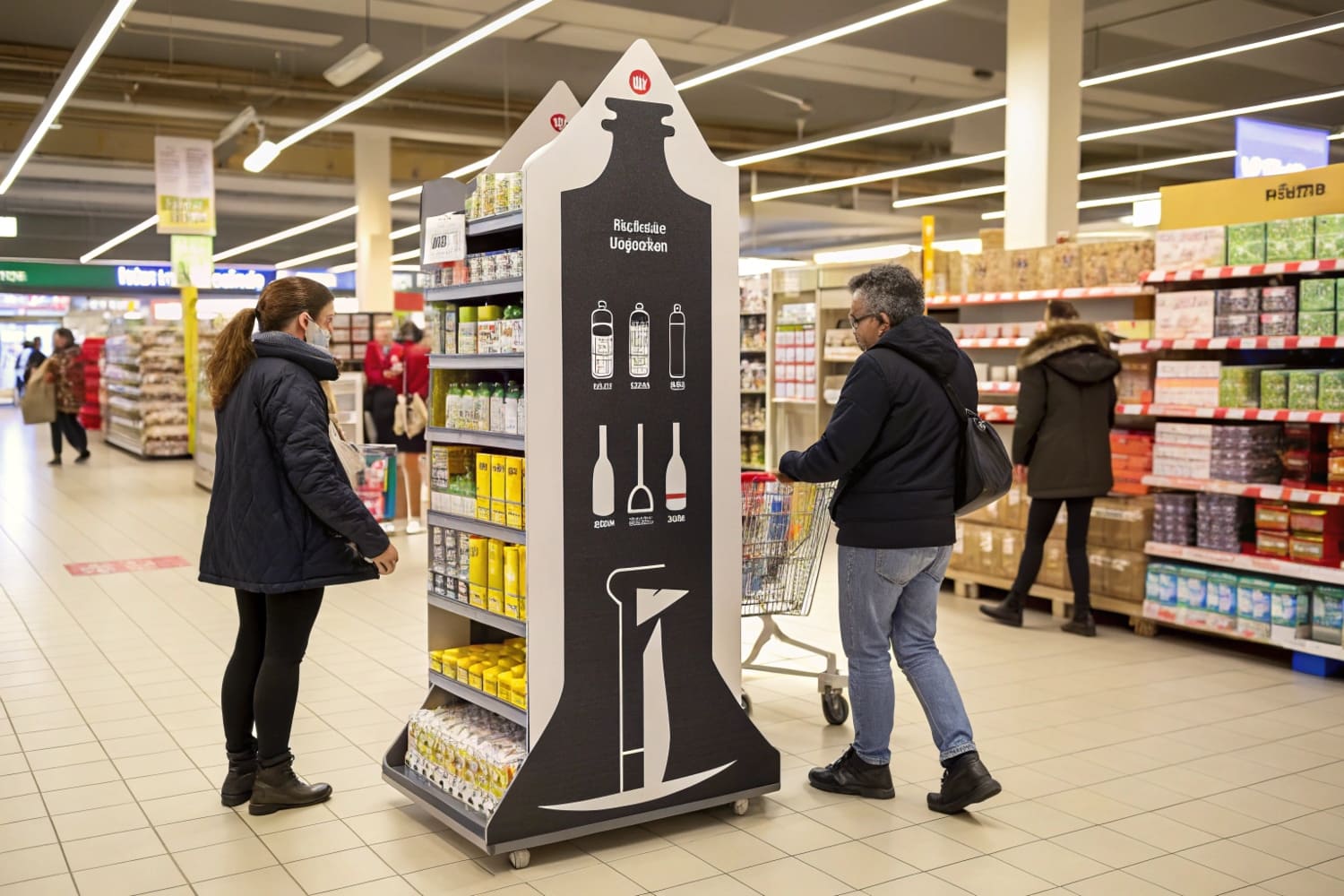Visitors walk past dull stands. Sales fall. I felt that pain until I changed the way I design displays and started treating every stand as a silent sales partner.
Good display stands match shopper needs, respect brand goals, hold weight safely, show products clearly, and guide eyes fast. They use sturdy material, sharp print, easy setup, and an inviting shape that stops traffic and sparks purchase.
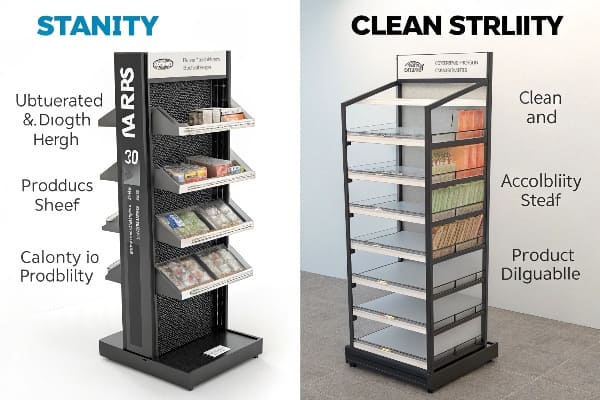
A stand that sells must do more than hold a box. In the next sections I unpack the rules I follow on my factory floor so you can pick or build a stand that works every day, every store.
What makes an effective display?
Many brands lose shoppers in the last three feet. I once did the same until a retailer told me my display looked like “background.” That sting pushed me to learn how to earn the foreground.
An effective display grabs attention in three seconds, tells one clear story, proves product value at a glance, and makes the next action—touch, scan, or buy—feel effortless.
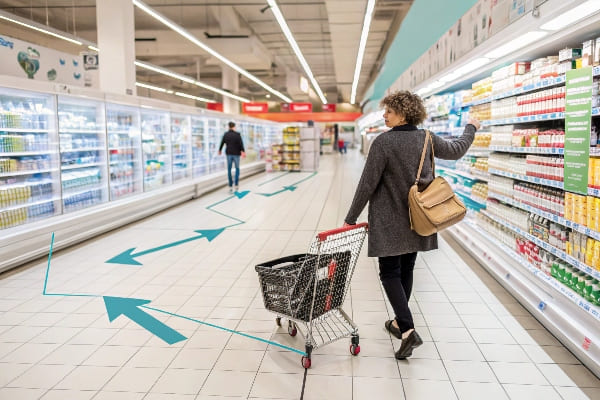
Know the Shopper Path
Shoppers scan from left to right, then top to bottom. I map that path on every new layout and place the hero item1 where the eye lands first. A short headline sits right under it. Each layer below answers “why buy now?”
Balance Story and Stock
Too much stock hides the story; too little wastes floor rent. I test fill levels with mock-ups and walk the aisle myself. I watch for gaps that break flow and tweak until the shelf stays full but readable.
Track Results, Not Guess
After launch, I track sales per SKU per store week. If lift is under 15 %, the display needs work. Sometimes I swap colors; other times I add a QR video tag. Data, not hope, guides every fix.
| Factor | Why It Matters | My Quick Fix |
|---|---|---|
| Eye-level hit zone | First three seconds decide stop or walk | Put the best-margin item there |
| Single message | Cuts mental load | Use five words max |
| Easy reach | Removes friction | Keep top shelf under 1.6 m |
| Measurable lift | Proves worth | Compare sell-through pre/post |
What are the criteria of a good retail display?
Stores judge displays like buyers judge products: by space, by cost, by risk. Early in my career one chain rejected my beautiful stand because it took five minutes to build. That day I wrote my own checklist.
A good retail display meets store specs, builds in under two minutes, fits target aisle space, carries planned weight with safety margin, and leaves no mess when removed.

Fit the Planogram
Retailers plan every centimeter. I always ask for the latest planogram PDF2 and design around its depth, peg type, and traffic flow. When I respect their map, they place me in prime spots.
Fast Build, Low Tools
Staff turnover is high. I design folds, tabs, and color codes so a new clerk can build the stand on first try. My record is 90 seconds from flat pack to loaded unit.
Safety and Compliance
A falling stand hurts people and brands. I use corrugated board3 that passes 2× load drop tests. I also print recycling codes and safety icons right on the side panels to calm store auditors.
| Criterion | Test I Run | Accepted Benchmark |
|---|---|---|
| Assembly time | Video timed with new clerk | ≤ 120 s |
| Load capacity | Static 48 h + shock 10 g | 2× product weight |
| Footprint accuracy | CAD to store planogram | ± 2 mm |
| End-of-life | Curbside recycle symbol | 100 % paper |
What are display stands made of?
Clients often think “cardboard” is one thing. I once lost margin using the wrong flute because I assumed E-flute sounded premium. The shipment sagged. Since then I treat material like an engineer treats steel grades.
Display stands can be paperboard, corrugated fiberboard, MDF, acrylic, metal, or mixed media; choice depends on load, lifespan, budget, and sustainability goals.
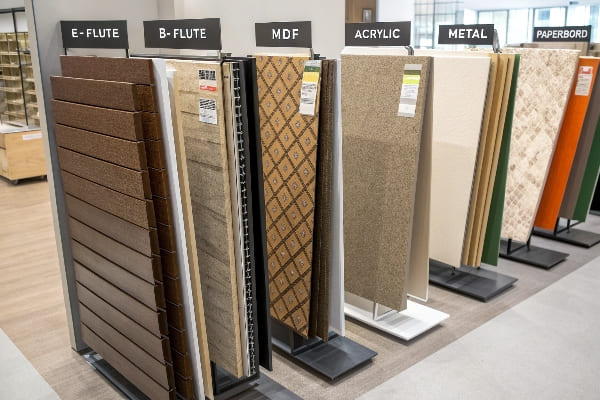
Paperboard vs. Corrugated
Paperboard is thin and sleek; great for counter units under 2 kg. Corrugated—my specialty—adds flutes for strength. I pick E-flute4 for tight print detail, B-flute for strength, and double-wall when a stack of crossbows needs support.
Rigid Boards and Plastics
For wet zones or long promos, I switch to MDF or acrylic5. They resist moisture and give a high-end feel. I often mount a printed cardboard sleeve over acrylic shelves to keep cost low yet show clean edges.
Hybrid Builds6
Mixing materials wins both worlds. I bolt a metal frame inside a corrugated tower when a buyer wants a 1.8 m structure that holds 100 kg. The shopper sees bright print; the hidden steel keeps it upright.
| Material | Max Safe Load* | Recycle Ease | Cost Index** |
|---|---|---|---|
| CCNB + E-flute | 5 kg | ★★★★☆ | 1.0 |
| Double-wall corrugate | 25 kg | ★★★★☆ | 1.4 |
| MDF 9 mm | 50 kg | ★★☆☆☆ | 2.2 |
| Powder-coated steel | 100 kg | ★☆☆☆☆ | 3.0 |
*Load based on 0.4 m² shelf.
**Relative to single-wall corrugate.
What makes a display attractive?
The eye likes order, contrast, and story. I learned this while watching shoppers film unboxing videos near my stand. The display in the frame had clean lines and one bold color, not ten.
An attractive display uses clear hierarchy, bold contrast, honest colors, real-life textures, and lighting that pulls the product forward while fading the backdrop.
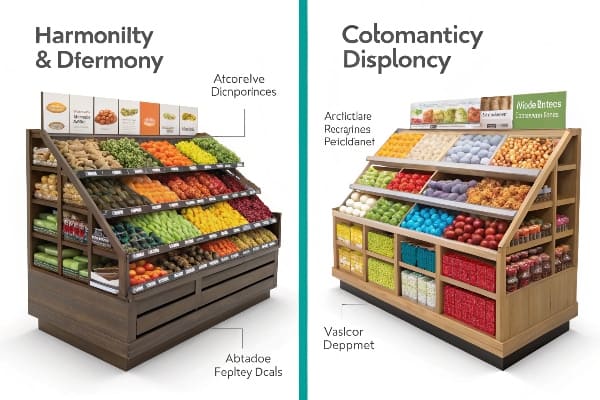
Color and Contrast
I follow the 60-30-10 rule7: 60 % brand base color, 30 % neutral, 10 % accent that pops. Too many tints look cheap. I print on white kraft to keep hues bright.
Typography That Sells
Fonts talk. I pair one headline font with one body font, never more. Size jumps should be clear. Shoppers should read the benefit from two meters away without squinting.
Sensory Touchpoints
Texture matters. I add soft-touch varnish8 on grip areas so shoppers feel quality. Sometimes I embed a simple LED strip at the toe-kick to cast a gentle upward glow.
| Visual Element | Common Mistake | My Fix |
|---|---|---|
| Color palette | Five brand colors at once | Stick to one accent |
| Fonts | Fancy script that blurs | Use bold sans-serif9 |
| Callout tags | Too small to read | 24 pt minimum |
| Lighting | None or harsh white | Warm LED edge strip |
Conclusion
Great display stands catch the eye, tell one truth fast, carry stock safely, and leave shoppers eager to buy again. I build every stand with those simple rules in mind.
Understanding the concept of a hero item can enhance your merchandising strategy and improve sales. ↩
Understanding planograms can enhance your retail strategy and improve product placement efficiency. ↩
Explore the advantages of corrugated board for safety and sustainability in retail environments. ↩
Explore this link to understand the benefits of E-flute in packaging, especially for detailed prints. ↩
Learn about the moisture resistance and aesthetic benefits of MDF and acrylic for high-end displays. ↩
Discover how hybrid builds combine materials for strength and aesthetics in display solutions. ↩
Understanding the 60-30-10 rule can enhance your design skills and help create visually appealing layouts. ↩
Exploring soft-touch varnish can provide insights into enhancing product quality and customer experience. ↩
Learning about bold sans-serif fonts can improve readability and impact in your design projects. ↩

